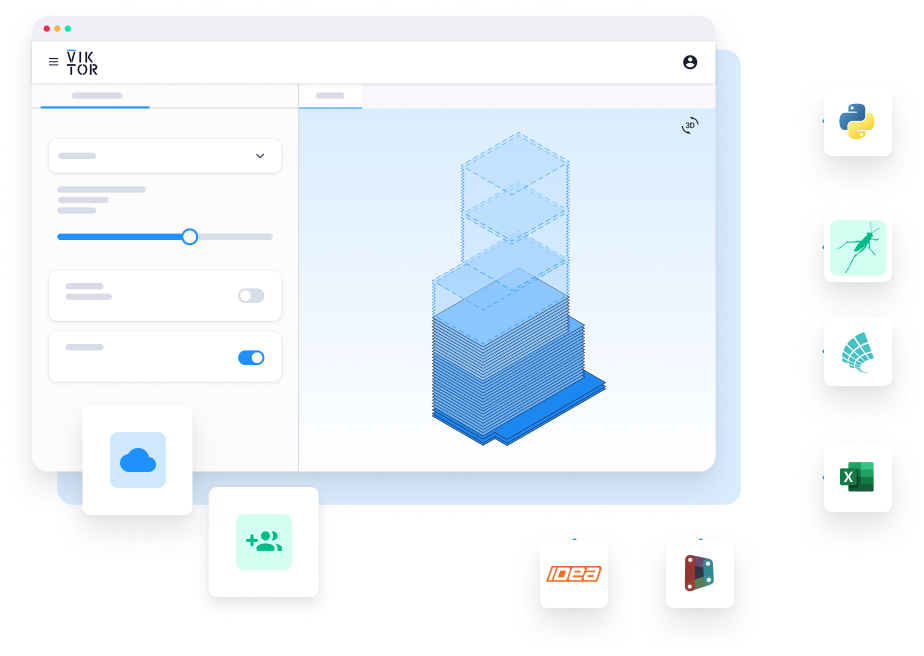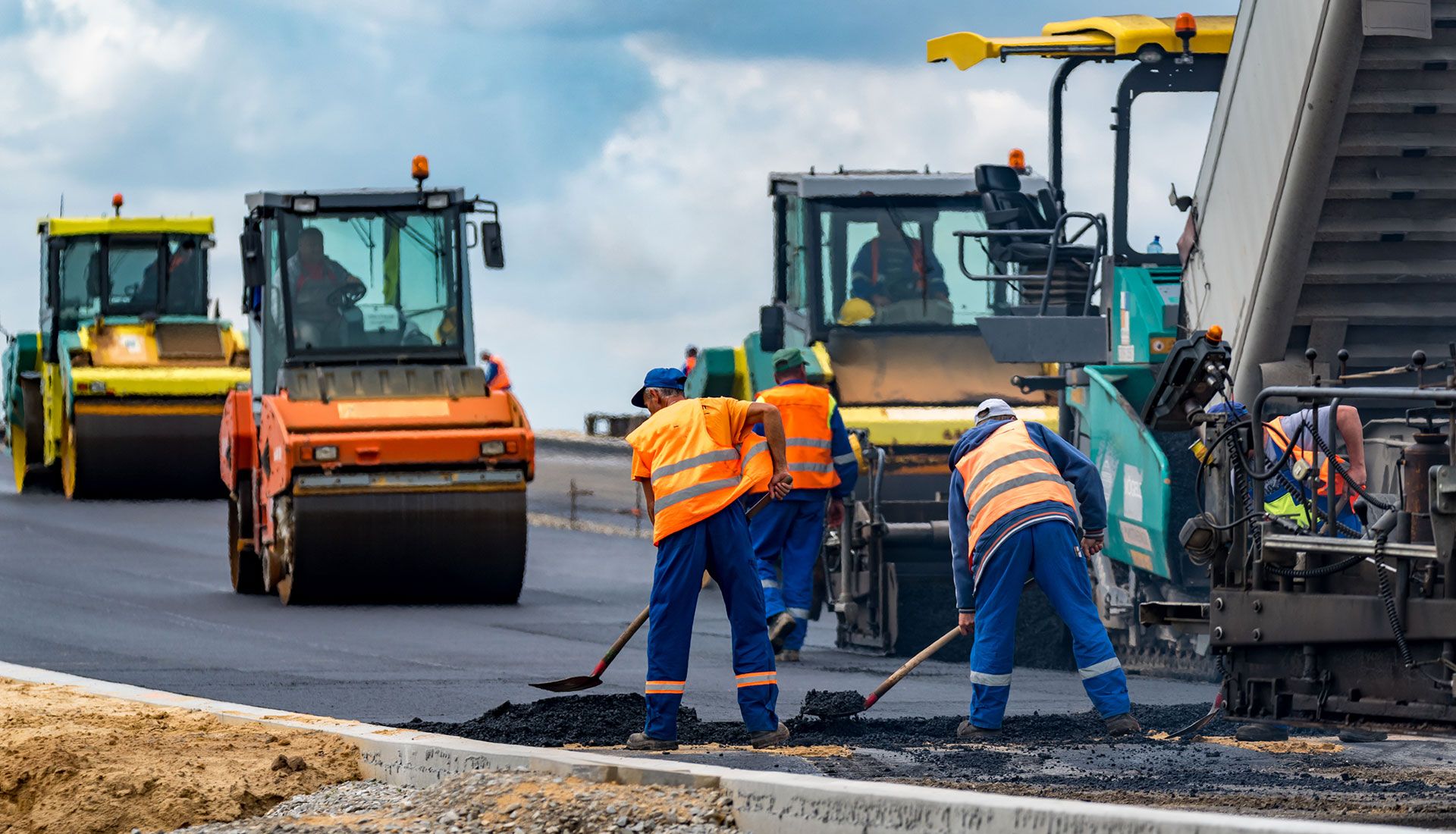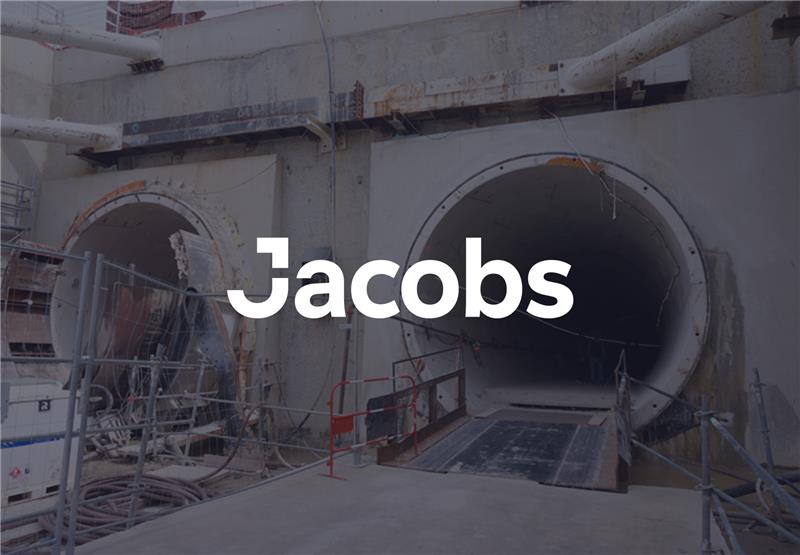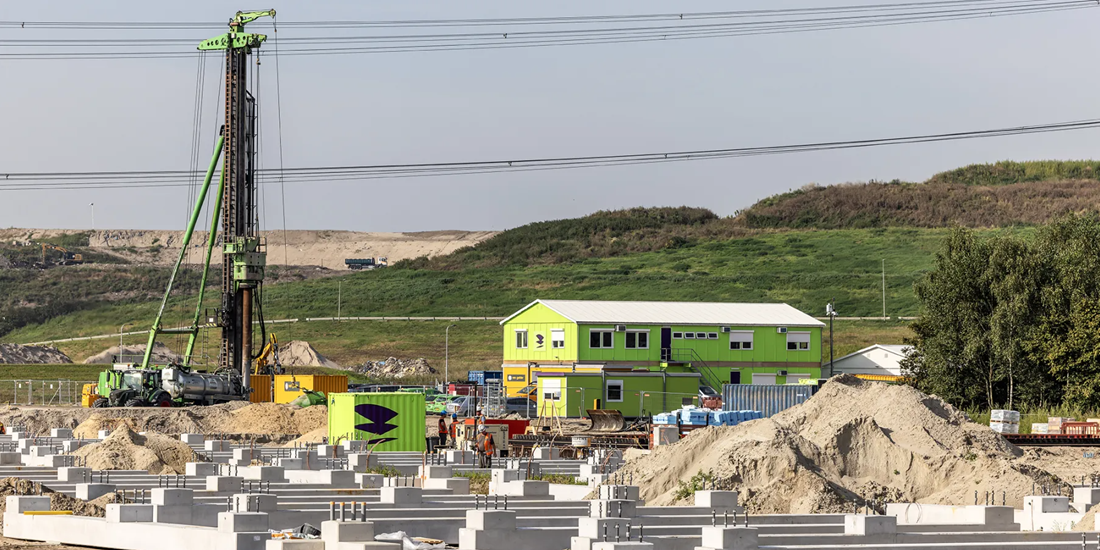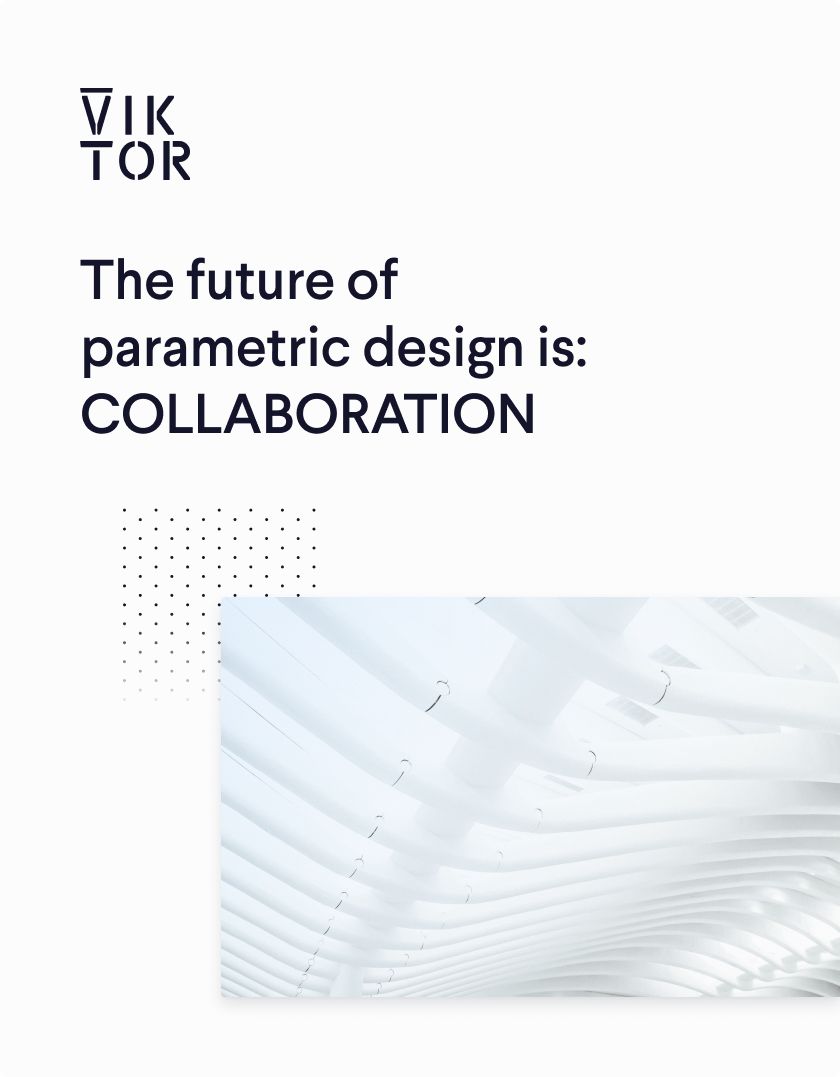
Download the white paper and get INSPIRED
Learn how collaborative parametric design models allow you to work together for better solutions.
Delete this entry
In this article, we will dive deeper into the specifics of two of the latest Cloud-based applications that VolkerWessels developed on the VIKTOR platform, used for road surfacing and sheet pile construction.
The Road Pavement application
The Road Pavement application is developed for the design of asphalt constructions. The application uses input form the CROW, an umbrella organization for multiple market parties, who developed a web tool called OIA (OntwerpInstrumentarium Asfaltverhardingen) with a database that provides all information that is necessary for the calculation of asphalt constructions.
Road pavement engineering
Even though this information is very sufficient, running through all calculations that are needed to create a design took road pavement engineers at VolkerWessels KWS@vise a lot of time and manual work. Therefore, they used the VIKTOR platform to develop a Cloud-based Python application that uses parametric design methods to automate and optimize these calculations.
Batch calculations
With the parametric design application, they can import data from OIA to create batches of information that are used to automatically calculate designs at the push of a button. It is easy to optimize the designs since height and amount of asphalt can quickly be adjusted. Additionally, results can be found in a clear and visual overview of each road section. This takes a lot of manual labour from the road pavement engineers and leaves more time to analyse and optimise.
See how the application works in this video:
The Sheet Pile application
Because many underground construction projects keep getting more complex, a lot of data needs to be processed and calculations performed in order to generate the designs. Currently, all of this data is manually put into the system. Calculations are performed manually as well. These processes are both time consuming and prone to error. Therefore, VolkerWessels build the Sheet Pile application for automation and optimization.
Geotechnical engineering
Like many other VIKTOR applications, the Sheet Pile application is used to easily import and read GEF files of CPTs so geotechnical data is centralized in one place and can be used for adjustments. Furthermore, within the web application, geotechnical engineers can easily enter a sheet pile structure and define the phases of construction, such as excavation, load, and groundwater level, on a user-friendly and intuitive interface.
PLAXIS integration
For these calculations, the high-end finite element program PLAXIS is used through an integration with Python and the VIKTOR interface. The input for the PLAXIS calculations can be sent in the background and the result is returned automatically in Excel tables and PLAXIS graphical pictures. This can be done in batch as well. From here, you can see whether there are any adjustments needed. If so, all calculations can be run again (in batch) at the push of a button.
See how the application works in this video:
Future aspirations
VolkerWessels is far from done developing their own Python applications and is working hard on proving people the potential they have, for example by adding new features on demand to their existing tools and developing entirely new ones.
Digital transformation
According to Guido Bongers, Lead Developer parametric design at VolkerWessels, their applications have a big potential. Currently, adoption is the biggest challenge. Not all intended users are fully convinced of the benefits and prefer to stick to their familiar and traditional ways of working. Therefore, the next step is to start with a professional plan to promote their web applications and train potential users so they can truly be adopted.
“What I keep noticing is that building an awesome application works out every time. The technical side of the story is all fine. However, what we are really investing in right now is the adoption of these technicalities. We want people to start using the product we made. That is the truely difficult part.” – Guido Bongers, Lead Developer parametric design at VolkerWessels.
New features
Regarding the Road Pavement application, there is a future version 2.0 in sight which will facilitate the collaboration between more disciplines. When it comes to the Sheet Pile application, VolkerWessels has some new features in mind as well. However, incorporating more disciplines is not one of them. p
“The Sheet Pile application is for one discipline only: The Geotechnical engineer. This is done to ensure user-friendliness. Sometimes, it can be beneficial to build a large application that brings multiple disciplines together and sometimes it is more beneficial to keep it small and focused. That is the choice the Lead Developer needs to make, keeping the end-user in mind at all times.” – Guido Bongers, Lead Developer parametric design at VolkerWessels
VolkerWessels still has a backlog with all kinds of functions and features that users would like to add to their applications. For the Sheet Pile application, one of these features is for example the addition of the underwater concrete floor. Guido: “That is why it is so great to have your own team to develop your own application. This allows you full freedom to add whatever you want to your app!”
Upcoming projects
Besides the previous projects, VolkerWessels is currently working on three other Cloud-based applications as well. And they have more projects on the way.
“These are all medium sized projects that last about 3 to 6 months to complete. After that, they can be used constantly. That is 3 to 6 months work from which you can reap the benefits for years!” – Guido Bongers, Lead Developer parametric design at VolkerWessels.
